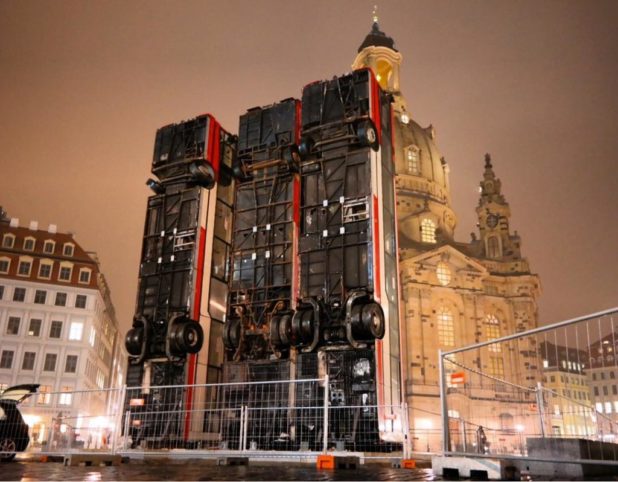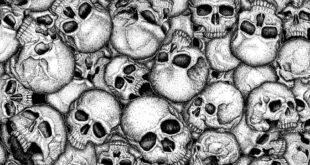Diversity Macht Frei
February 9, 2017
These upright buses are supposedly an “artwork” created by “artist” Manaf Halbouni. They have been placed in Dresden’s central square, where the Pegida rallies are held. Leaving aside their absence of artistic quality, they seem to serve two principal purposes. First, they constitute a defilement of the nearby Christian church, the Frauenkirche, through a reminder of Islamic horror. Second, they physically block the area where the Pegida rallies have been held. The local mayor has long been an opponent of the Pegida rallies and, incidentally, has also said that the fire-bombing of Dresden in WW2 was justified.
A statement issued by the local branch of Germany’s rightwing populist party Alternative für Deutschland (AfD) decried Halbouni’s artwork as an “abuse of artistic freedom” deliberately designed to “snub the citizens of Dresden and drive Pegida on to the barricades”, overshadowing the central symbol of Dresden’s post-reunification revival with “scrap metal”.
The official unveiling on Tuesday led to tumultuous scenes in the city centre, with protesters and supporters jostling each other in a large crowd in front of the artwork. Mayor Dirk Hilbert’s speech was largely drowned out by a crowd of people booing, jeering and shouting “Go away!”
Halbouni, denounced by the AfD statement as a “rootless wanderer”, has close ties to Dresden. His Syrian father met his German mother while studying architecture at the city’s university. Together they moved to Damascus in 1979. Halbouni was born there but returned frequently to Germany in his youth. He has childhood memories of the Frauenkirche church when it was still in ruins. Since 2009, he has been based at the city’s school of fine arts.
Responding to the AfD, the artist said, in a roundabout way, his critics were partly correct: “I am rootless, in the sense that the war has taken my childhood away from me, by killing or scattering the friends of my youth all over the globe,” he said. “Since then I have been in transit, because I still feel that people here struggle to take me seriously as a German.”
On the Facebook page of one local rightwing activist network, users criticised the artwork as a deliberate attempt to shame native Germans and belittle their historic suffering. “Since the fall of the wall we are apparently only allowed to be perpetrators, not victims”, one statement read.
 Daily Stormer The Most Censored Publication in History
Daily Stormer The Most Censored Publication in History



